Let's talk...
About the drawings: We can browse the book and direct our child’s attention to the book’s facial expressions, and the gradation of colours from red, to orange, to yellow. We can ask our child: How angry does the book feel now? A lot or a little? How did you know that?
About feelings of anger: We can ask our child: What causes you to feel angry? What happens to your body when you get angry? What helps you to calm down?
Let's communicate...
We act out various daily events with different emotional states with our child; for example: we can ask them to act as if they’re eating pizza while angry, or combing their hair while scared, or reading a book while happy, and so on. This simple activity enables the child to identify andbe aware of their different feelings, which helps them control them.
Let's create...
We can build a “comfort corner” in the house with our child. We might put a toy that they like there, different drawings, a comfortable chair, a small blanket, a water bottle, and whatever our child wants from the tools that help them. And when they feel angry, we can ask them: Let’s go together to the comfort corner for you to calm down, and we’ll continue our talk there. We can maintain physical contact like patting on the hand or shoulder, and ask them from time to time: Do you still feel angry now? And we continue doing this until they calm down.
Let’s talk...
About pirates and captains: We can ask our child: Is Salman a captain or a pirate? What’s the difference between them? Can he be both?
About flexible thinking: We can ask our child: Have you ever understood something in two different ways? Or have others interpreted it differently?
About similar experiences: We can askour child: Have you ever gone on a journey or had an adventure where you discovered something new? Where and what did you discover?
Let’s enrich our language...
We can learn new words like: mast, cabin, dozen, gang, amber, and others. We canlook for rhyming words in the text like: qursan (pirate), qubtan (captain), qumsan(shirts), sa’dan (monkey), farman (decree) and others.
We can try to understand their meanings and search for new words with the same rhythm.
Let’s create...
We can dress up as pirates, draw a treasure map, and go “pirating” together on an exciting search journey around and inside the house!
Let’s explore...
Characters: We can search for stories about famous maritime figures mentioned in the text, like Magellan, and others not mentioned, like Ibn Battuta, Khair ad-Din Barbous,and Sinbad. We can learn about researcher Jane Goodall and the fictional character Tarzan.
The Map: We can examine the map below and follow Pirate Salman’s ship route and explore the cities he visited: Who are their inhabitants? What is their traditional dress and folk food?
Let’s talk...
About dealing with differences: We can ask our child: How was Cookie different from her friends? How did she feel? How did she find a solution to her problem?
About dealing with problems: We can our child if they ever felt different or faced a problem because of that difference. What did they do? How did they act? Did anyone support them? How did they do it?
Let’s create...
We can make a shell from household items and embark on different adventures from our imagination, narrating them with our words and movements.
We can ask our child to think of different ways to use various objects-spoon, piece ofcloth, book, pen, shells, and others…
Let’s explore...
We can visit the beach, search for living creatures on the shore, such as: turtles, crabs, seaweed, shells, and others. We can collect shells to make a necklace or picture frame.
Let’s communicate...
Our society includes different people, some of whom face various challenges like visual impairment and limited mobility. We can take our child on a tour around town and look for signs indicating accessibility for people with special needs. We can take pictures of them with our phone camera and talk about them and the importance of accessibility in general.
Let's talk about...
About problem solving: We can ask our children: What was the problem the rabbits faced? How did they feel? How did they act? And how were they able to solve it? We can read and follow the drawings and talk about what the rabbits did.
About solidarity and the ability to influence: We can talk with our child about challenges they face at school or in the family: What is the source of this challenge?What does our child feel, and how can they deal with it? We can also look for problems our neighbourhoodand town suffer from, such as the garbage problem for example,and think about our role as a family in addressing it.
Let’s enrich our language...
The Diverse Library: The librarian classified the books and distributed them in different boxes according to their topics and types: encyclopaedias, puzzles, space stories and so on. We can browse our home library and try to classify its books together according to their literary genres. We can borrow various books from the public library, and expose our children to non-fiction literary genres, such as: riddles, poetry, cookbooks, arts, and others.
Let's communicate...
Visiting the public library: We can visit the public library, get to know the library sections and the different types of books in it, and borrow a book we would like to read. Older siblings can read to the younger ones.
Joint activity: We can plan a joint activity with friends in theneighbourhood, such as: decorating or cleaning the street, hanging banners with beautiful phrases, and so on.
Let’s create...
Treasure Hunt: We can draw a map of the house and determine a path on the map to find the treasure. We can playwith our child, and each time we draw a different path to reach the treasure.
Watercolours: The story illustrator used watercolours. We can make these colours together from materials available at home such as: beet juice for lilac colour, carrot juice for orange colour, tomato juice or ketchup for red colour. Spices, such as turmeric, provide us with another excellent source for making colours.
Let’s talk...
We can develop our child’s imagination by creating an alternate ending for the story or continuing it ourselves. We can ask the child: What do you think happened to the anteater? Did he like the taste of bananas? Does he really eat bananas? Where did the ants disappear to? What do you think happened next?
Let’s communicate...
We can hold a family joke party. Each family member is invited to share their favourite joke, appropriate for the child’s age.
Let’s discover...
We can search for information about the types of animals mentioned in the story. Where does each animal live? What does it really eat? What is its preferred environment?
Let’s create...
We can encourage our child to create a painting using different colour combinations.We can use crayons and watercolours to colour on paper.
We can inspire our child to write their first humorous book or their unique version of “What Does the Anteater Eat?” Children can introduce new animals and craft a new creative ending to the story.
Let’s observe...
Ants walk along the bottom of most pages of the book, while the anteater walks through the forest landscapes searching for breakfast under his feet. We can follow the drawings, search for the ants, and remember to laugh along the way!
Let’s talk...
We can ask our children questions that stimulate thinking, such as:
What made the soup really delicious? Do you think the soup could have been delicious without the villagers contribution?
Why were the villagers hesitant to participate at the beginning?
How did the leader overcome this hesitation?
How did each of the animals in the village think? And what was their position before and after the trick?

Let’s enrich our Language...
We prepare vegetable soup with our child’s participation. We can talk about the types of vegetables in the soup and use verbs that indicate the actions we do while preparing food: we wash, peel, divide, grate, squeeze, sprinkle, sift, mix, and others.
Let's create...
We can collect smooth stones of different sizes, color them or write on them, and decorate our house yard or garden with them.
Let's research...
We can search in our home library for similar folk tales that have been reformulated from the Lantern library and others, such as: The Woodcutter, The Empty Pot, Aunt Zarkashat Sells Hats, and others.
Let's talk...
About characters in the story: We can compare the traits of the merchant, the tiger, the bull, and the rabbit. We can deduce what distinguishes them through their behaviour.
About the concept of justice and fairness: Does doing good always bring good in return? We might initially think that the good deed the merchant did for the tiger would lead to a disaster, but the cleverness of the rabbit shows us a different outcome. What can we conclude?
About the trust: A simple word that can be expressed through feelings, thoughts, and actions. We can recall people we trust deeply. How did that trust develop?
About experiences from our lives: Have we done a good deed and offered help to someone? We can recall experiences from our lives where we received help or provided it.
Let’s enrich our Language...
New words and vocabulary: We can familiarize ourselves with unfamiliar words and understand their meanings.
Punctuation marks: We can observe question/exclamation/quotation marks. What do they mean?
Proverbs and sayings: We can search for proverbs, sayings, and admonitions that talk about doing good, justice, caution, and other meanings that captivate us.
Let's create...
Role-playing: Each of us plays the role of one of the story’s characters. We can think about their situation, feelings, and expressions.
Courtroom game: We can choose situations from our daily lives, and each of us can play a role in defending a different position. Who among us is the judge/accused/lawyer? Who supports another character?
Let's explore...
Nature: We can go on a hike to the nearby nature. Which trees do we notice? What animals might we encounter? We capture natural scenes and compile them as a memory of our enjoyable outing together.
Animals around us: Are there any pets in our neighborhood looking for shelter or food? How can we help them safely? (We might prepare a box for cat food or a bird feeder).
Let’s talk...
About desires and wishes: Mountain wanted to see the sun, but he couldn’t. We can talk to our child about the things they want and desire: which things can they have, and which are hard for them to get? How do they feel? We can think together and suggest different ways to fulfill our desires.
Feelings: We can follow the drawings with our children and talk about the various feelings of Mountain and his friends. We can name them and ask the children about their causes, such as: feelings of frustration when he could not see the sun; feeling excited; Sympathy from friends. We can connect feelings to their effect on our behavior.
Solving problems: Mountain’s friends tried to deal with his problem by suggesting several solutions. We can talk with our children about the solutions that his friends have suggested and offer others that they have not. We can train our children to be flexible, creative outside-the-box thinkers.
Helping and Cooperating: Mountain’s friends sympathized with him and tried to fulfill his desire to see the sun. We can ask our children: Did anyone help them get something they wanted? Then we can also ask: Who supported them? How did they feel?
Let’s play and imagine...
We can choose an object, think outside the box, and suggest many uses for it beyond the well-known traditional use.
Let’s act and innovate...
We can train our children to think flexibly by suggesting issues and problems that our child faces in daily life and searching for and acting out many solutions.
Let’s explore...
We can go out to nature with the family to observe the mountains and witness their beauty and the life of the creatures living there.
Together, you can...
Together, you can discuss what the crow, the turtle, and the mouse each did to save the deer from the trap. Could the deer have been saved without their cooperation?
Recall an incident...
Recall an incident at home or in your neighborhood where people cooperated to help someone. What did each one do? In addition, what did our child do? It is time to talk about the role of every one, even if it is a small role.
The story starts...
The story starts with an illustration of the friends playing chess. Maybe it can encourage us to play chess with our child.
How about a theater...
How about a theater show of the mouse and his three friends? We can make masks of each character and play the story. Who will play the hunter role?
Hunting deer...
Hunting deer is illegal in our country because deer is an endangered species. It is time to talk about hunting wild animals. Why do some people would want to hunt? Maybe we can learn about endangered species with our children and what animals it is illegal to hunt in different parts of the world.
What do you think...
What do you think the new adventure of the three friends will be the next day? We can encourage our child to use his/her imagination and make up a story about another adventure the three friends might have.
Let’s talk...
About the problem: in our first reading, and before we reach the solution, we should ask our child the following: the mother asked Alfie to find the solution to his problem, “How could he get the cake in a better way?” What do you suggest he should do? We can continue reading and ask our child again, what are the solutions suggested by Alfie? And what is the appropriate solution?
About our feelings: We can trace the drawings and talk about Alfie’s feelings. We can ask our children: How did Alfie feel when he saw his mother making cakes? How did he feel when she refused to give him the cake and asked him to think of a way to get it? How did he feel when he couldn’t find the solution? How did he feel at the end of the story?
About our attempts: Alfie tried several times and various ways to reach the solution. We can ask our children: Have you ever tried to get something or do something numerous times? How many times have you tried? When do we feel discouraged? how many trials does it take before we give up? What do we do when we are frustrated?
About problem solving: We can have a conversation with our child about similar situations in which they must find solutions to situations or problems. We can ask them: Did you encounter a problem? what is it? How did you feel? How many times have you tried? How did you find the solution? Who helped you? If you didn’t find a solution, how did you feel? How did you deal with the feeling of frustration?
Interaction between mother and child: The mother prepares cakes for Alfie and the rest of the family. We can talk with our child about what is happening in our home: What are the things that the mother and father do for us? What are the things you like to do together?
Life and social situations: Alfie’s mother portrayed an advanced model for dialogue and for giving and taking, by demonstrating it in her behaviour. We can have a conversation with our child about what is happening in our home. We can ask them: What happens when you do something different from what our mother or father wants? How do you behave? How would you like them to talk to you?
Let’s communicate...
We can spend quality time together with our child, preparing a cake, or preparing a communal meal.
Let’s enrich our language...
Our story contains emotional, mental, and social words, such as: to love; to desire; frustrated; thought; an idea occurred to him; an idea popped into his head; thanks; please; sorry. We should use these words in everyday context.
Let’s act and create...
We can choose different social situations, and with our children, we can familiarize ourselves with mild expressions that are appropriate for these situations. Together, we can act out the appropriate behaviour and use the appropriate social expressions – for example: a birthday party; visit to a patient; an apology; entertaining a guest; being a guest; when we need help…
Let’s talk...
About the need for help: We can talk about the feelings of the Big Bear before and after everyone cooperated to help him. We can ask our child: How did the bear feel when he could not find a place to sit? How did he feel after he found a place with the rest of the bears? We can name these feelings, and we can ask our child: Why did he have these feelings?
About the challenges we face: The Big Bear encounters a problem; we can ask our child: What is the problem? Did they encounter any problem? How did they get over it?
About our experiences of participation and cooperation: With our child, we can share an experience in which we cooperated with other people to help one of them, and then we can ask them about a similar experience they went through at home or in kindergarten: How did they feel when they cooperated with others, or when they provided assistance to those who needed it? How do they think the person they helped felt?
Let’s enrich our Language...
Sensory-kinetic dictionary: the story contains sensory vocabulary, such as: cottony / soft, and contains kinaesthetic vocabulary, such as: dragging, standing, sitting. We can make their use easier in our daily life by describing various objects and different motor performances and allow our child to express their movements and actions with these words.
Dictionary of Mathematical Awareness: The story contains ordinal mathematical vocabulary, such as: the first, the second, two three, and five. We can practice and play with our position in the immediate family and the position of uncles and aunts in the extended family.
Let’s explore...
We can search for various sources of information about bears: their types, food and livelihoods. We may also enjoy watching a documentary with our child about them.
Let’s create...
With our children, we can prepare toy bears from different fabrics and materials available at home, such as: socks, shirts, buttons and coloured woollen threads.
Let’s play together...
We can play a game of chairs together. We organize the chairs and spin around them to the sound of music. When the music stops, we have to sit on the chairs, and each time we drop one. Can we all sit on the same chair? Let’s try!
نتحاور
- حول الحاجة إلى المساعدة: نتحدّث عن مشاعر الدبّ الكبير قبل وبعد أن تعاون الجميع على مساعدته. نسأل الأطفال: كيف شعر الدبّ عندما لم يجد مكانًا يجلس فيه؟ كيف شعر بعد أن وجد له مكانًا مع بقية الدببة؟ نسمّي هذه المشاعر، ونسألهم: لماذا راودته هذه المشاعر؟
- حول تحدّيات تواجهنا: واجهت الدبّ الكبير مشكلة، نسأل الأطفال ما هي المشكلة؟ هل واجهتك مشكلة ما؟ كيف تخطيتها؟
- حول تجاربنا في المشاركة والتّعاون: نشارك الأطفال بتجربة تعاونّا فيها مع أشخاص آخرين لمساعدة شخص ما. ثمّ نسألهم عن تجربة مُماثلة مرّوا بها في البيت أو في الروضة: ماذا شعرت عندما تعاونت مع الآخرين أو عندما قدّمت المساعدة لمن يحتاجها؟ ماذا، برأيك، شعر الشخص الذي ساعدته؟
نثري لغتنا
قاموس حسّيّ حركيّ: تحتوي القصة على مفردات حسيّة، نحو: صوفيّ، ناعم. وتحتوي على مفردات حركيّة، نحو: يصعد، يتسلّق، يجلس. نيسّر استعمالها في حياتنا اليوميّة لوصف أغراضنا وحركاتنا، ونفسح المجال للطفل ليعبّر عن حركاته وأفعاله.
قاموس الوعي الرياضيّ: تحتوي القصة على مفردات رياضيّة تراتبيّة، نحو: الأوّل، الثّاني، الثّالث، الرّابع. يمكننا إدخالها ضمن الأنشطة المختلفة بالروضة (مثل الأنشطة الحركيّة في الساحة عند الانتظار بجانب الألعاب…).
نبدع
- نستضيف في الصفّ ورشة للأهالي، أو الأجداد، ونحضّر برفقة الأطفال دببًا من أقمشة ومواد مختلفة متوفّرة في البيت، نحو: جوارب، قمصان، أزرار وخيطان صوفيّة مُلوّنة.
- نحضّر لعبة من وحي القصة، نحو لعبة ذاكرة تحتوي على مفاهيم المكان مثل (بجانب، بين، تحت)، صفات (منقّط، مخطّط)، ومفاهيم أخرى من وحي القصّة.
نمثّل
حياتنا في الروضة غنيّة بالمواقف التي يجد الطفل فيها صعوبة في المشاركة، وخاصّة وقت اللعب. نشاهد الأطفال، ثمّ نقوم بتمثيلها مجدّدًا ونتبادل الأدوار. بعد ذلك، نتحدّث ونتحاور حول مشاعر ورغبات الشركاء في الموقف، وعن الصعوبات التي واجهناها وطرق التعامل معها. نساندهم في التعبير عن مشاعرهم، ونبيّن لهم أنّ المشاركة تعني الاهتمام بالآخر وإظهار ودّنا له.
نلعب معًا
“في صفّنا مكان لكلّ طفل“: نلعب معًا لعبة الكراسي. نصفّ الكراسي وندور حولها على أنغام موسيقيّة. حين تتوقف الموسيقى، نجلس على الكراسي، في كلّ مرة نوقف فيها الموسيقى نُنقص كرسيًا. هل ننجح في أن نجلس كلّنا على كرسيّ واحدٍ؟ لنجرّب!
Look through the...
Look through the book together and examine the unusual illustrations that accompany the text. Notice the various perspectives the illustrator used in creating these pictures. Which pictures show the action from above—and which from the side? Talk with your children and ask them why they think the illustrator chose to portray the events on the bridge as she did.
Sometimes, before we...
Sometimes, before we arrive at a good idea, we first have to try (and discard) some not-so-good ideas. Together with your children, go back over the various solutions which the bear and the giant proposed in the story. What are the upsides and downsides of each idea?
Do you remember...
Do you remember the game of “Golden bridge”? Stand opposite your child and hold both his hand high to form a bridge. Invite other family members and friends to pass under the bridge, while singing: “Oh Golden bridge, Oh golden bridge/ we all pass under you and someone will be caught”. Whoever is passing the minute you say “caught” is out.
Let’s have a conversation...
About the title: We can read the title with our children and ask them: What do they think we can do with a problem? We hear and listen to them and continue our reading of the book.
About the plot: having a dialogue about the plot enables our child to understand the book and then proceed to infer the information between the lines. We can trace the drawings and talk with our child about various events. For example, we can ask them: What happened to the child? How did he feel? The problem is depicted in the drawing as a black cloud. What do they think could be that problem he faced? How did it happen? How do they deal with it? What happened when he ignored her and kicked her out? And what happened when he encountered her? What did he discover then?
About feelings and thoughts: The drawings express various feelings beautifully. We can follow the drawings with our children and ask about each event: how did the child feel? What was he thinking? What did he desire? We can call feelings and thoughts by their names: confusion when the problem arose; anger; anxiety; fear… We can also ask: Why did the child have this feeling?
About our thoughts: What thoughts did the child have? We can list them with our children: “What would happen if you swallowed me?” “What if I took all my things?” We can ask the child: Are these things really possible? and how? Have they ever thought this way? when? how did they feel?
About solving problems and getting out of a problem: We can ask our child: What is meant by “to face the problem”? What is meant by “inside my problem there is an opportunity hiding?” We can ask our child: Did they ever get into trouble? How did they feel? How did they get out of it? Who helped them? What did they learn from that experience? We can involve our child in ways of solving problems: we can determine the reason for the problem, then we can determine what the problem is, and then we can put possible solutions to it and determine what the consequences are of each solution, and on this basis, we can choose the best solution.
About child empowerment: Children rely on their abilities, positive experiences, and past successes in dealing with problems. We can remind our children of previous experiences in which they were able to overcome problems and difficulties, and we can talk about the qualities and things that helped them to overcome the problem and face it.
We can write...
We can write a scenario of many problems with our children that they may fall into, and we can rehearse the things that they can say to themselves and do to face the problems, such as: getting lost in the mall; being bullied; having trouble with a friend, when a stranger knocks on the door and the parents are not at home… We can act with our children and take on the different characters. We can talk about our feelings, thoughts, and actions.
The book is rich...
The book is rich in beautiful and new linguistic vocabulary. We can explain them to our children while reading and we can talk about it afterwards as well, such as: I am facing a problem; I ignore it; I crept in; camouflage; opportunity. We can use these words in our daily lives to become part of our child’s linguistic dictionary.
Super Phil can...
Super Phil can fly in the sky, Aunt Zelda is a brilliant seamstress, and Filo is brilliant in devising tricks. We talk about the things that our child does brilliantly and that make him “super”.
We imagine that...
We imagine that the two elephants come across a herd of giraffes, or a group of bears, or frogs in the puddle. Which tricks may Filo devise to bypass the animals?
We think about...
We think about why illustrator drew Filo and Aunt Zelda in different colors while he drew the other elephants in gray.
A family workshop...
A family workshop to design fashion that makes us with superpowers! We need old clothes, fabric dyes, and some small pieces for decoration like buttons, feathers, shiny fabrics, etc.
We can recall...
We can recall the experience of learning a new skill with our child, such as riding a bike, or crossing the street. What prompted him to learn this skill? Who helped him? How did he learn it? It is also nice to share with our child our experiences in learning skills such as using a computer or a mobile phone, etc.
We can talk...
We can talk with our child about the things that he can do (such as assembling a certain number of puzzle pieces, preparing simple food, etc.), and about the things that he wants to do and is not yet able to. We point out that many skills develop during the course of our growth, as well as with practice.
The hedgehog walks...
The hedgehog walks, the rabbit hops, the squirrel jumps. We can take turns with our child to imitate and guess each animal’s way of walking in the story.
Move – movement...
Move – movement, hop – leap, what would the author write if the hedgehog met a snail and a raven?
We can discuss...
We can discuss the question at the end of the story with our child: What does s/he gain and what does s/he lose if they share the apple with their friends, and if s/he does not share it? We try to listen to our child well, and understand how difficult it is for him/her to share what s/he has with others.
We can talk...
We can talk about the times we share what we have with others, such as serving food to guests and sharing a game with another child. What do we feel when we do so?
The hedgehog plans...
The hedgehog plans to divide his apple into two, then three, then four pieces. We can draw our child’s attention to these mathematical concepts while preparing food together, or while using playdough.
If we read...
If we read the story several times, the repeated sentences provide an excellent opportunity to involve the child in the narration.
We can also...
We can also act out the story using toys available at home, or by making toys from sticks.
This is an occasion...
This is an occasion to invite neighbors, friends or relatives to celebrate by sharing a meal together!
Together, we can...
Together, we can recall the situations that Fares went through during his day, and that led to the emptying of his bucket. How did he feel? We can talk about other situations that Fares would have encountered at home, in the street, and at school, which would empty his bucket.
With our child...
With our child, we can remember the situations in which Fares felt that his bucket was full. How did Fares feel in every situation? Can we imagine other situations in which he feels his bucket getting full?
How do we encourage...
How do we encourage and help others in our daily life? We can chat with our child about what they are doing and what they can do to achieve that.
We can write...
We can write the title “We are a family that fills buckets” on a large paper, on which family members can record actions and words that help them fill buckets, such as saying thank you, helping with housework, sharing games with siblings, and others.
After reading the story...
After reading the story with our child, we can close our eyes and try to recover the smell or smells that remind us of each other. Which smells relate to other family members in our memories?
Places are also...
Places are also associated with specific smells in our memories. Which scents do we smell when we remember the house, the garden, or grandfather’s or a friend’s house?
We can talk...
We can talk about scents that our child loves at home, and others they do not like. They may wish to draw the sources of those scents. How can we make our home smell sweeter?
What do I love...
What do I love doing with my mom? We may want to make a list, which we can hang somewhere in the house. Every week, we can choose an activity to do together.
How do we choose...
How do we choose a gift for someone we love? We can talk about things that we take into consideration when we choose a gift, such as: the person’s taste, interests, needs, and others.
The scent of...
“The scent of my father/grandfather/my grandmother/my sister/brother” may be the title of a beautiful book that we help our child in writing and drawing.
What is this smell...
“What is this smell?” could be a fun game in which all family members can participate. We collect various objects (food, plants …) and close someone’s eyes, and they must try to figure out the source of the scent based only on its smell.
Together, we can...
Together, we can look at the drawing of the sun and the drawing of the wind in the beginning of the book. We can talk about the colors of each drawing. How do the colors of each drawing make us feel?
We can look...
Together, we can look at the drawings of the wind, and search for signs which characterize its movement. We can look together through the window: Is the wind blowing at this moment? What is it doing?
Some people like...
Some people like hot weather and others prefer cold weather. What do we like to do on hot days? And what do we enjoy on cold days?
We can dramatize...
We can dramatize the story by turning it into a play and acting it out to family and friends. What would the sun’s mask and the wind’s mask look like?
With our child...
With our child, we may wish to explore the effects of the wind on different objects. We can blow on a stone, a paper, a feather, and a spoon. Which objects fly easily? Which ones do not move, or move with difficulty? Why?
We can recall...
Together, we can recall situations in our day in which we behave like the wind, and others like the sun. What was the result of each action?
Which features in the story...
Which features in the story suggest that it’s an old tale? Do we know any cities like the ones in the book?
Together, we can...
Together, we can recall the efforts made by the king, queen, and the other people of the palace to help the prince fall asleep. Which of these attempts does our child love? They may wish to suggest other methods to the people of the palace.
We can talk...
We can talk about the difficulty of sleeping that sometimes our child faces, and that we also face as adults. What causes it? Together, we can think of ways to help ourselves relax in bed, such as: diming the light in the room, sleeping in a quiet place, or reading a book together.
Why is it important...
Why is it important for us to sleep? And what happens to us if we don’t sleep enough? We can try to connect this with the child’s own life experiences.
We can look...
Together, we can look at the bedtime rituals of each one of our family members, such as: drinking a hot beverage, watching TV, or reading a book.
The old woman...
The old woman asks the little prince to close his eyes, and to imagine the events of the story. It would be fun if we could read this story to our child with their eyes closed! Did they imagine different characters from the ones in the story’s drawings?
How did she sleep...
“How did she sleep…?” could be the title of a funny book written and drawn by our child, about a personal experience they had when they found it difficult to sleep one night.
We can look...
We can look together at the drawings on page 5. How do Russel and his family get ready for bed? How do we, in our family, prepare for sleep? Together, we can look at the page before last in the story as the sheep wake up in the morning. How does each sheep start its day? How do we start the day at home?
We can chat...
We can chat with our child about the importance of sleep. What happens if our body does not get enough rest?
Sometimes our child...
Sometimes our child, and even us adults, find it difficult to fall asleep. What can help us? (Maybe we can read a book, hear a story, or have a warm drink…)
Russel has a special...
Russel has a special cute hat he wears to sleep. With our child, we may want to design a special hat for them to wear when getting ready for sleep. We can search our closets for an old hat and decorate it with our child in a creative workshop!
The sheep live...
The sheep live in “Frogfield,” the home of frogs. Imagine what the name of the field would be if rabbits lived there, or maybe cats.
While trying to fall...
While trying to fall asleep, Russel “takes off” his wool, so he starts to feel cold. Which things in our house are made of wool? This is an occasion to talk with our child about the wool’s “journey” from the sheep to our homes.
Russel counts up...
Russel counts up to six million and ten! Let’s try to count together: one…two…three…
With our child...
With our child, we can take another look at the snail’s journey to search for some calm and quiet. Which noisy neighbors did he happen to meet on his way? In what ways does each of them make noise?
We can chat...
We can chat with our child about Sid’s solution to his neighbors’ noisiness. Is it a permanent solution? And can the snail hold this party for his neighbors every night? What other solutions can we suggest to him?
We can think about...
We can think about our neighbors: why are they important to us? Who is our favorite neighbor, who is the least favorite, and why?
We can look...
With our child, we can look back at situations that our neighbors helped us with. We can chat with our child about simple daily behaviors that help build good relationships with our neighbors, such as helping an elderly neighbor carry heavy items, or maybe sharing delicious food we made with them, keeping quiet during the neighbors’ leisure hours…
A book-reading party...
“A book-reading party with our neighbors!” Our child might enjoy inviting the neighborhood kids to a party like this, to which each child brings his favorite book so they could read it together. How about reading this book to your neighbors?
We may want...
We may want to go out with our child to nature and search for snails and their shells and explore their species and ways of living.
Let’s look at...
Let’s look at Winnie’s room. What are the differences between Winnie’s room and ours? Encourage your child to read the clock on the wall, follow the clock hands and read the time as it shown along the story.
Winnie tries to change...
Winnie tries to change an apple into an orange using her defective magic wand with unexpected results. Let’s imagine other things that the apple could turn into if we had a magic wand and said, “abra kadabra.”
Wilbur the cat...
Wilbur the cat hurries to help Winnie, and looks hard for a new magic wand. We can recall an incident where our child helped family members or friends when they were in need. What did he feel? It would be good to share with our child our experience helping other people and how this helped to build good relationships.
The other magicians...
The other magicians ask Winnie about her magic ward, but she does not say anything. Does it happen to us that we don’t want to share with other people information regarding ourselves? Why?
The magic city is...
The magic city is full of weird magic stores; store for magic clothes, store for magic food and etc… imagine we are walking in this city, what other stores might we see? How would a playground look in this city? Maybe your child would like to draw it.
Family activity...
Family activity: Together, make Winnie’s hat and magic wand, and Wilbur’s mask! You can find illustrations in parents’ suggestion page on our website – www.al-fanoos.org
When the bird...
When the bird tried to take part in the auditions, he was refused and picked on. We can talk with our child about the bird’s feeling. Does the child experience similar feelings when he/she tries to play with a group of friends in class, or to take part in a family event?
The little bird...
The little bird did not give up but tried again and again to show his talent. We can encourage the child to think of different ways for the bird to show the band his talent.
We can think...
We can think if a close family event (a party or hanging with friends, or a trip). How can our child help? And how can we make it easier for him/her to help?
Music, beat, playing...
Music, beat, playing, singing, songs, these are some musical words the text includes. We can recall some other musical words that our child knows.
Our family is talented...
“Our family is talented!” it a name for a talent show that you and all your family can put on. It can be fun to arrange such a program with your child, arrange the stage and give out prizes to each other!
We can look...
We can look together at the last page of the book, where it has all the animal pictures: we can recall with our child the name of each animal and why it is hard to bring them home.
Encourage the child...
Encourage the child to think of an animal that was mentioned in the book and imagine together what we need to change in the house to make it livable for that animal (make a hole in the ceiling so the giraffe can stand straight…)
We can have...
We can have a conversation about other animals, that are not mentioned in the book, and discuss whether it is hard to keep them in the house and why.
If you have a pet...
If you have a pet at home, you can have a conversation about it, what the child loves about it and what is needed to take care for it.
We can imagine...
We can imagine that the dog in the story dirtied the house, and the parents did not like at all. Suggest to the child, what other animals she can raise in the house.
We are hosting...
We are hosting the animals! Maybe we want to make masks of animals faces and give each member of the family one and ask them to imitate the animal’s voice and way of moving. All we need is to draw the animals face and sticks.
We can follow...
We can follow with our child what caused the color of Pete’s shoes to change every time: the strawberry changed it to red, blueberry to blue … we can suggest different colors, such as orange and black, and encourage him to think what might change Pete’s shoes color to these colors.
We can encourage...
We can encourage our child to think of different objects that Pete might step on. What color would they turn his shoes?
We can go...
We can go to take a look at the shoes in our closet and check: which one is dusty, ruined, or has stains or scratched? Where did we step on our way that caused the shoes to look like this?
Despite the fact...
Despite the fact the Pete adores his white shoes, he is quite happy with every new color. Can we can recall similar incidents that happened with us: perhaps a piece of furniture that was used for a new purpose when it got old.
A fabric dye...
A fabric dye workshop! Your child might enjoy experiencing dying cloths with different colors. We can use organic materials such as boiling turmeric.
The illustrations...
The illustrations in this book are the main feature in it, as they clearly illustrate the events of the story and reveal more than the written text. When we first encounter the book, we review it with the children and encourage them to “read” the story as they figure it out according to the illustrations alone.
There are five pages...
There are five pages in this book (10-14) that show Sa’ad walking in the rain until he falls. We look at the second illustration (page 11) and wonder with the child about other possibilities of what may happen next: will the newspaper fall in the puddle and get wet? Or will Sa’ad’s hat fly away? This game of guessing strengthens the child’s ability to foresee upcoming events according to previously provided information.
Sa'ad's mother always...
Sa’ad’s mother always consoles him by hugging him and remediating his wounds, and preparing a beverage for him. How do we console others, and how do we like to be comforted when we feel pain or upset?
Sa'ad falls on...
Sa’ad falls on the sidewalk and wounds his leg. We talk about caution on the roads and how we can protect ourselves from harm.
Sa'ad's mother does...
Sa’ad’s mother does a silly, cute thing while trying to fix his hat, as all parents try their best but cannot always come with magic solutions for their children’s problems. We remember together similar events that have happened with members of our family.
Hat decoration workshop!...
Hat decoration workshop! We have fun with our children while decorating different hats. We can include family members and friends in this activity. We use different materials, such as colorful feathers, buttons, stickers, fabric dyes, etc.
We suggest that...
We suggest that you discuss with your child the dispute in the story in order to understand it: why did the neighbors fight? What was the result of the fight? What other ways to set the dispute can we think of, which avoid losing the olives? This is an opportunity to talk about your child’s experiences in dealing with disputes in school or at home.
“This is mine!”...
“This is mine!” we often hear children say. Together, discuss the concept of property: what makes things “belong to us”? What things can we share with others, and how?
Ask about the neighbor...
“Ask about the neighbor before asking about the house,” the Arabic proverb admonishes us. Think with your child about your neighbors: who do we consider friends and why? How can we keep good relations with them?
The faces of the...
The faces of the characters in the book are central and bold in every page. Together we can trace the facial expressions of the characters throughout the book.
Autumn is the olives...
Autumn is the olives- picking season that keeps many families busy. In our traditional culture, the season is rich with customs, songs, games and special kinds of food. It is a time when people come together and help each other. Talk about preparations for the season in your family or in families that you know.
The olive tree...
The olive tree is a “blessed” tree that enriches our lives with different gifts. Together, we can discover where these gifts “hide” in our home!
The mice accuse...
The mice accuse the birds of eating the fruits, so they start shouting and cursing. You can discuss the mice’s hasty assumptions and hot-tempered reaction. What did the mice react as they did? Can you and your children remember some situations where you or they reacted angrily before they understood a situation? How did they or we feel then? And what were the consequences of our hasty reaction?
Borzok's experience...
Borzok’s experience with the field mice and with the big wild bird, made him see all birds as vicious until he nested with the birds and became their friends. We can reflect with our child on an experience at home or outside when he/she changed their mind regarding a person or a group.
At the end...
At the end of the story, both sides shared the ripe red fruits in the field. What can the mice share with their new friends?
Autumn is the birds...
Autumn is the birds’ migration period in our country. Perhaps take you child to a garden or into nature to watch migrating birds and also to search for abandoned nests.
What do birds like...
What do birds like to eat in our surroundings? Let us design a “restaurant” for the birds and hang it on the tree. We can put in it food (such as seeds, fruit or vegetables), and then check what our garden’s visitors like best.
Author/Illustrator...
Author/Illustrator Lio Lioni’s special technique is using parts of leaves to form the characters in his books. We may want to examine this technique with our child by letting him create his favorite characters from the story!
 The Angry Book
The Angry Book  Salman the Pirate Searches for Shirts
Salman the Pirate Searches for Shirts  Where is Cookie’s Shell?
Where is Cookie’s Shell?  Help Us
Help Us 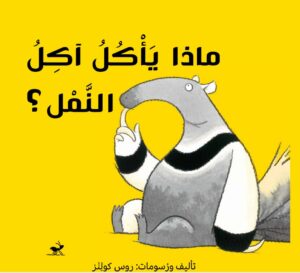 What Does The Anteater Eat?
What Does The Anteater Eat?  Stone Soup
Stone Soup  Don’t Trust The Tiger
Don’t Trust The Tiger  The Wise King
The Wise King 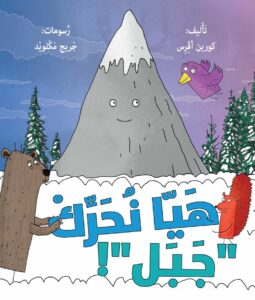 Move Mountain
Move Mountain 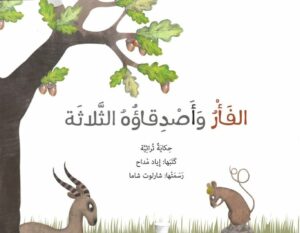 The Mouse and his Three Friends
The Mouse and his Three Friends  May I please have a cookie
May I please have a cookie  Bears on Chairs
Bears on Chairs 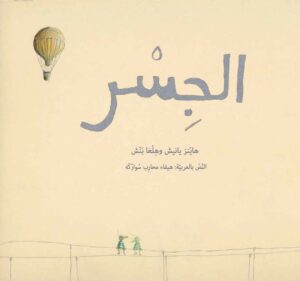 The Bridge
The Bridge 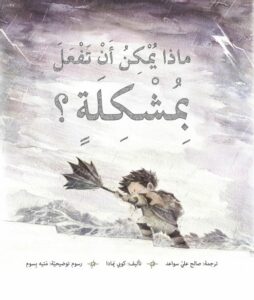 What do you do with a problem?
What do you do with a problem? 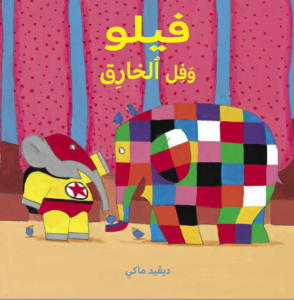 Filo and Super Phil
Filo and Super Phil 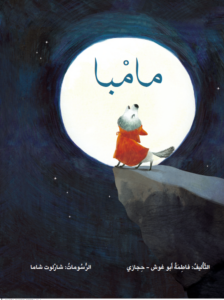 Mamba
Mamba 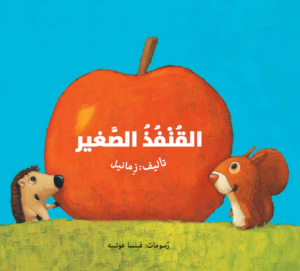 Little Hedgehog
Little Hedgehog 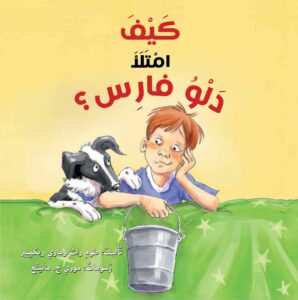 How Full is Your Bucket?
How Full is Your Bucket? 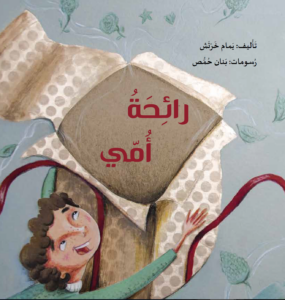 Scent of My Mother
Scent of My Mother 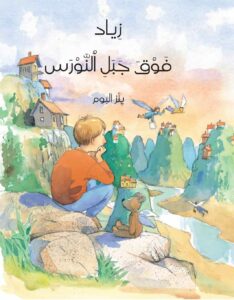 Ziyad on the Seagull Mountain
Ziyad on the Seagull Mountain 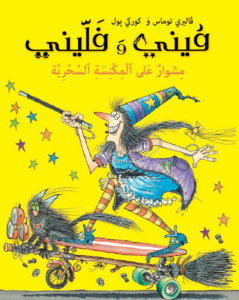 Winnie and Wilber: The Broomstick Ride
Winnie and Wilber: The Broomstick Ride 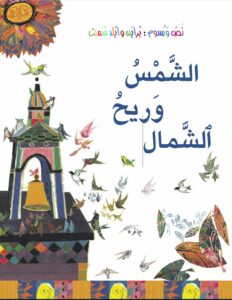 The North Wind and the Sun
The North Wind and the Sun 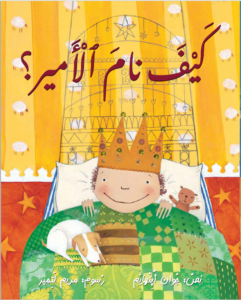 The Prince’s Bedtime
The Prince’s Bedtime 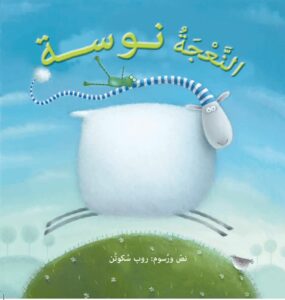 Russel The Sheep
Russel The Sheep 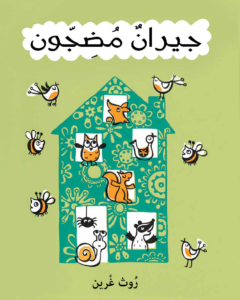 Noisy Neighbors
Noisy Neighbors 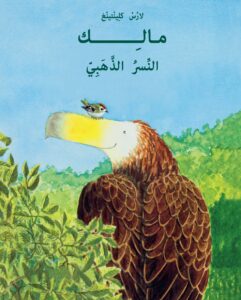 Malek, the Golden Eagle
Malek, the Golden Eagle 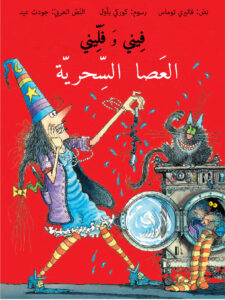 Winnie and Wilbur: The Magic Wand
Winnie and Wilbur: The Magic Wand 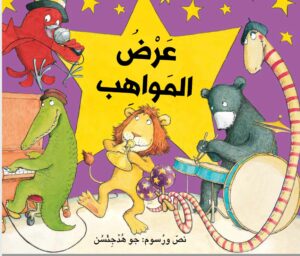 The Talent Show
The Talent Show 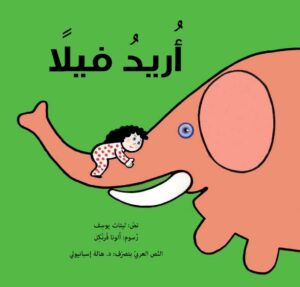 I Want an Elephant
I Want an Elephant 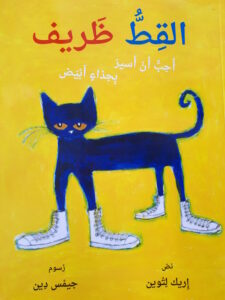 Pete the Cat- I Love My White Shoe
Pete the Cat- I Love My White Shoe 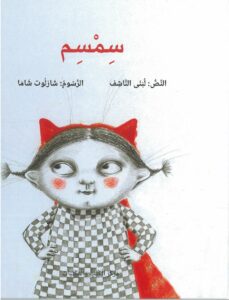 Simsim
Simsim 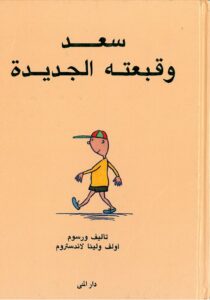 Saad and His New Cap
Saad and His New Cap 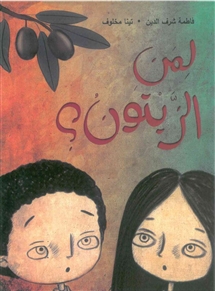 Whose Olives?
Whose Olives? 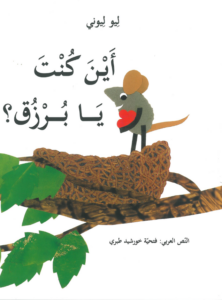 Nicolas Where Have You Been?
Nicolas Where Have You Been? 
